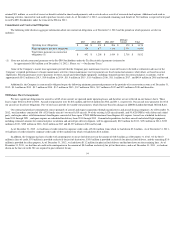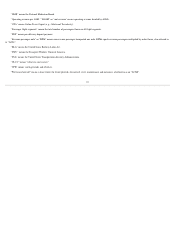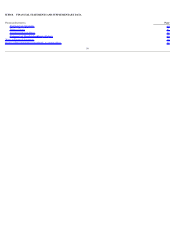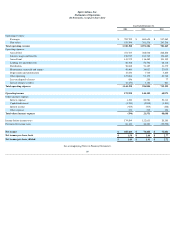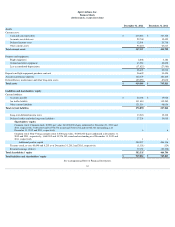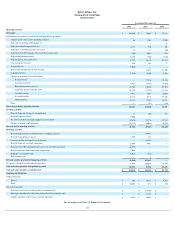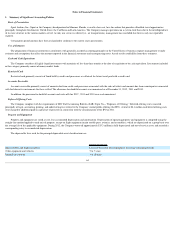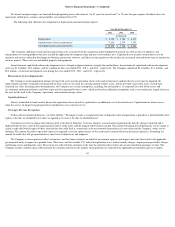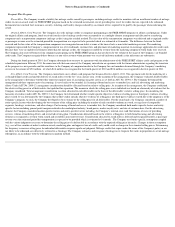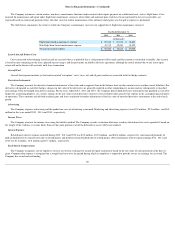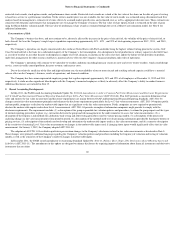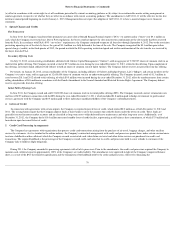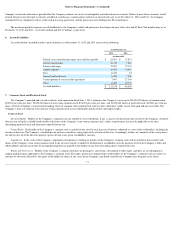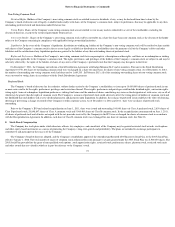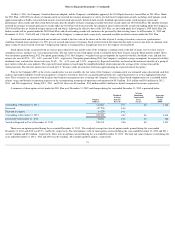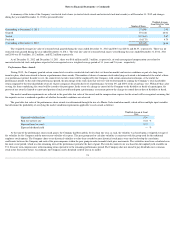Spirit Airlines 2012 Annual Report Download - page 65
Download and view the complete annual report
Please find page 65 of the 2012 Spirit Airlines annual report below. You can navigate through the pages in the report by either clicking on the pages listed below, or by using the keyword search tool below to find specific information within the annual report.
Notes to Financial Statements
Basis of Presentation
Spirit Airlines, Inc. (Spirit or the Company) headquartered in Miramar, Florida, is an ultra low-cost, low-fare airline that provides affordable travel opportunities
principally throughout the domestic United States, the Caribbean and Latin America. The Company manages operations on a system-wide basis due to the interdependence
of its route structure in the various markets served. As only one service is offered (i.e., air transportation), management has concluded that there is only one reportable
segment.
Certain prior period amounts have been reclassified to conform to the current year's presentation.
Use of Estimates
The preparation of financial statements in conformity with generally accepted accounting principles in the United States of America requires management to make
estimates and assumptions that affect the amounts reported in the financial statements and accompanying notes. Actual results could differ from these estimates.
Cash and Cash Equivalents
The Company considers all highly liquid investments with maturities of less than three months at the date of acquisition to be cash equivalents. Investments included
in this category primarily consist of money market funds.
Restricted Cash
Restricted cash primarily consists of funds held by credit card processors as collateral for future travel paid with a credit card.
Accounts Receivable
Accounts receivable primarily consist of amounts due from credit card processors associated with the sales of tickets and amounts due from counterparties associated
with fuel derivative instruments that have settled. The allowance for doubtful accounts was immaterial as of December 31, 2012 , 2011 and 2010 .
In addition, the provision for doubtful accounts and write-offs for 2012 , 2011 and 2010 were each immaterial.
Deferred Offering Costs
The Company complies with the requirements of SEC Staff Accounting Bulletin (SAB) Topic 5A—“Expenses of Offering.” Deferred offering costs consisted
principally of legal, accounting, printing, and underwriting fees related to the Company's initial public offering (the IPO). A total of $6.1 million in deferred offering costs
were charged to additional paid-in capital net of proceeds in connection with the consummation of the IPO in 2011.
Property and Equipment
Property and equipment are stated at cost, less accumulated depreciation and amortization. Depreciation of operating property and equipment is computed using the
straight-line method applied to each unit of property, except on flight equipment (major rotable parts, avionics, and assemblies), which are depreciated on a group basis over
the average life of the applicable equipment. During 2012, the Company wrote off approximately $15.3 million in fully depreciated and out-of-service assets and recorded a
corresponding entry to accumulated depreciation.
The depreciable lives used for the principal depreciable asset classifications are:
64
1.
Summary of Significant Accounting Policies
Estimated Useful Life
Spare rotables and flight assemblies Lesser of the useful life of equipment or average remaining fleet life
Other equipment and vehicles 5 to 7 years
Internal use software 3 to 10 years


